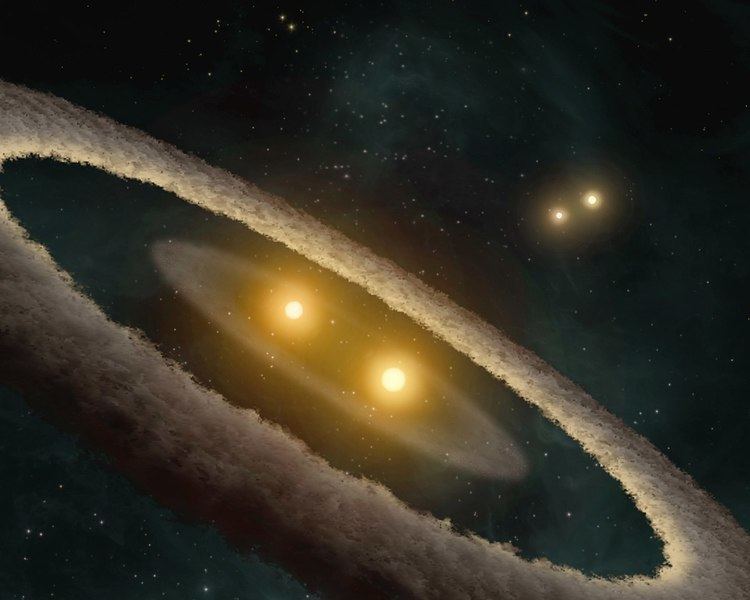 | ||
HD 98800, also catalogued as TV Crateris (TV Crt), is a quadruple star system approximately 150 light-years away in the constellation of Crater (the cup). The system is located within the TW Hydrae association. The system consists of HD 98800 A and HD 98800 B each of which contains two stars.
Contents
In 2007, a debris disk was discovered orbiting HD 98800 B consisting of two rings which indicates there may be an extrasolar planet orbiting within a distance of 1.5 to 2 astronomical units.
Stellar system
The system consists of four T Tauri stars that are located within the TW Hydrae association. Within the system, there are two separate systems of binary stars. Each system (separately catalogued as HD 98800 A and HD 98800 B) consists of two stars. Although the four stars are gravitationally bound, the distance separating the two binary pairs is about 50 astronomical units (somewhat more than the average distance between the Sun and Pluto). Not much is known about each individual star, except that they are basically Solar twin stars.
Debris disk
An infrared excess indicative of a debris disk was first discovered by IRAS. Further observations of the system have been made using Keck and the Spitzer Space Telescope. The disk consists of two separate belts. The inner ring extends from a distance of 1.5 to 2 astronomical units from the barycenter of the central binary. The outer ring begins at approximately 5.9 astronomical units from the central binary, and extends out an undetermined distance. The gap between the two rings is ~3 astronomical units. The inner ring is thin, while the inner portion of the outer ring is dense.
Dr. Elise Furlan, leader of the Spitzer team that imaged this disk, concludes that the dust generated from the collision of rocky objects in the outer belt should eventually migrate toward the inner disk. But because the system is a double binary system, the dust particles do not evenly fill out the inner disk as expected.
Possible planets
Debris disks are thought to constitute a phase in planetary formation. Because of the gap within the debris disk, the possibility of a planet within the system becomes even more likely. The detected gap could be caused by a unique gravitational relationship between the disk and a possible planet already begun to form, carving out a clear space in the disk. However, the gap could also be gravitational resonance effects of the four stars.
